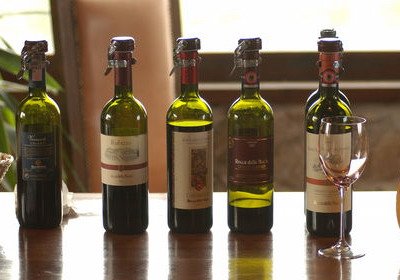
Nearly all the wines of the world are named according to their grape variety; that’s how fundamental the grape is.
Most of the 11 red grape varieties are Major Players, but those in the first four are particularly famous.
Here I list this most famous 4 below:
CABERNET SAUVIGNON
Nicknames: Cabernet, Cab
Origin: France
Where significant today: France’s Bordeaux region; southern France; California, Washington State, Long Island, and many other U.S. wine regions; Australia; South Africa; Chile; Argentina; isolated parts of Spain and Portugal; parts of Italy; Romania; Bulgaria.
Characteristics: Cabernet Sauvignon grapes are relatively small, their skin is relatively thick, and their seeds are large – all three factors contributing to a high solids-to-juice ratio. This ratio translates into deeply colored wines with a firm tannic structure. Wines make entirely from Cabernet Sauvignon can be so tannic that winemakers often blend Merlot and sometimes Cabernet Franc with their Cabernet. In the Bordeaux region of France, in fact, where Cabernet became famous, such blending is the norm.
If the grapes have not ripened perfectly, Cabernet wine can have vegetal aromas and flavors, specifically raw green bell peppers. At full ripeness, Cabernet gives its wine the aroma and flavor of black currants or cassis. The best wines from Cabernet tend to age very well, developing fascinating aromas such as leather, tobacco, lead pencil, and cedar along the way.
MERLOT
Origin: France
Where significant today: France’s Bordeaux region; southwestern France; southern France; California, Washington state, and Long Island; Argentina; Chile; northeastern Italy; Romania; Bulgaria; South Africa.
Characteristics: Merlot’s large, plump, thin-skinned berries provide winemakers with sweet juice from which they can make a dark, soft, low-tannin wine that is relatively high in alcohol. Because Merlot wine is softer and less tannic than Cabernet wine, many winemakers blend some Cabernet into their Merlot to give the wine more intensity than the Merlot alone can provide. The aromas and flavors of Merlot tend toward plummy fruit and chocolate. Merlot wines are usually ready to drink at a younger age than Cabernet wines.
Merlot wine is extremely popular with wine drinkers these days, and grapegrowers all over the world are growing the Merlot grape to capitalize on that popularity. Unfortunately, Merlot is more finicky than the Cabernet Sauvignon grape in terms of its growing conditions. Some of the places where Merlot is grown today are less than ideal because their climate is too warm or too cool, or their soil is too sandy. As a result, the range of quality levels that exists for Merlot wine is more dramatic than for Cabernet, with many thin, vegetal wines from underripe fruit and many overly alcoholic wines from overripe fruit.
PINOT NOIR
Origin: France
Where significant today: France’s Burgundy region, the Alsace region of France, southern Germany, northeastern Italy, Switzerland, California and Oregon, New Zealand. Also important in the Champagne region of France, where it makes sparkling wines that are white, not red.
Characteristics: Pinot Noir is not a deeply pigmented grape; therefore its wines are usually not particularly dark in color. The grape is relatively low in tannin, and its wines are, too, unless the winemaker augments the tannin by aging the wine in new oak barrels( where it picks up the tannin of the oak) or by retaining some of the stems during fermentation.
The aromas and flavors of Pinot Noir vary tremendously according to where the grape is grown. The most common are a vivid fruity character – either red berries or black berries; a sweet, tomato-paste flavor (in parts of California); and earthy aromas reminiscent of dead leaves and underbrush. The aromas and flavors of this grape are so prized that Pinot Noir-based wines are almost always made entirely from the Pinot Noir grape without blending in other grapes. Except for very finest (very expensive) examples, Pinot Noir wines are best when young, from one to six years of age.
SYRAH
Origin: France
Where significant today: France’s Rhone, southern France, Australia *where the wine is called Shiraz), Switzerland, South Africa (where it is called Shiraz), parts of California, Israel, Also grown in Italy and Washington.
Characteristics: Dark color and high levels of tannin characterize Syrah grapes and most of the wines made from them. The aromas and flavors can be very complex, ranging from fruit flavors (strawberry, cherry, or raspberry) to vegetal flavors (roasted green peppers), meaty flavors (smoky bacon), spicy flavors (barbecue or black pepper), or even chemical aromas, such as burn rubber.
The style of Syrah wines varies according to where the grapes are grown and the type of wine the winemaker intends to make. (Some winemakers intentionally extract very little color and/or tannin from their Syrah grapes, for example.) The least intense examples are very flavorful, easy-to-drink wines with candied fruit or fresh fruit flavors; the most intense examples are sturdy, concentrated, long-aging wines with vegetal and meaty flavors interwoven with fruit.
